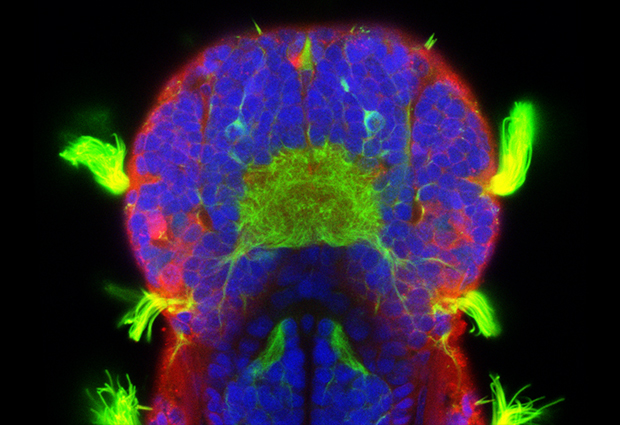
A worm’s sense of the world
EMBL researchers discover that four organs in a marine worm’s head can sense different chemicals

We sense the world around us using primarily our eyes, ears and nose. Marine worms, on the other hand, have long been thought to understand the world very differently – primarily by detecting chemicals in the ocean water that surrounds them – although this has not been investigated in detail. Now, researchers in the Arendt group have recorded nerve cell activity in the head of marine worms. The worm’s small size and transparency, means that all of the nerves and neurons within the head can be imaged at once. They found that these cells located in four particular areas of the head reacted when the worms were exposed to different chemicals. Alcohols, sugars, amino acids and an ester that smells like pears were tested. Reporting in Open Biology, the group identified these four areas of the head as the worm’s chemosensory organs, capable of detecting different chemicals in the surrounding environment. The worm’s antennae could detect each chemical equally well, whereas three other organs responded to each chemical differently. These chemosensory organs could help the worm go about its daily business of eating, escaping from prey or reproducing.



